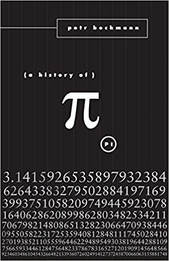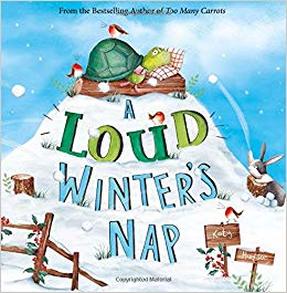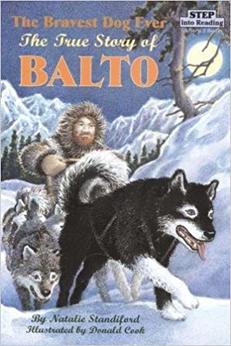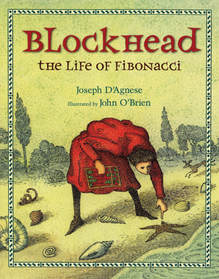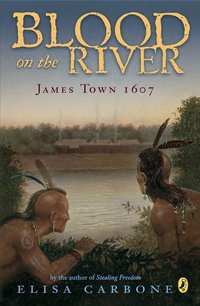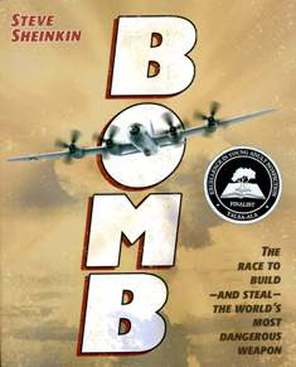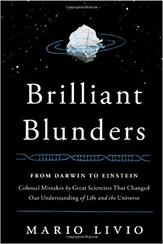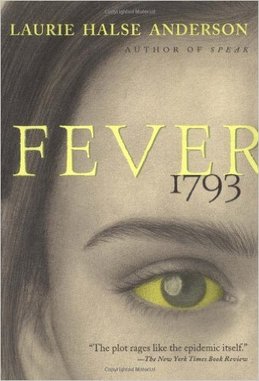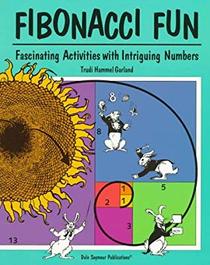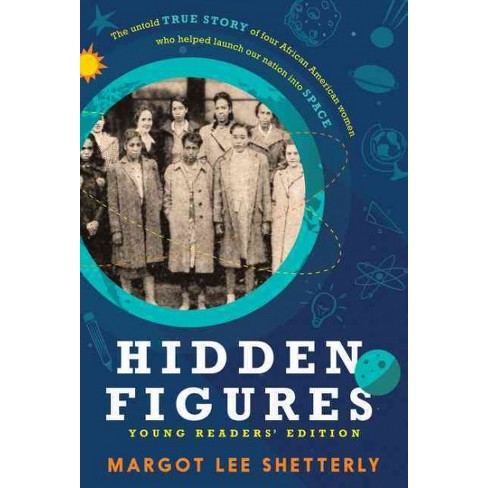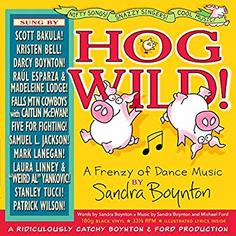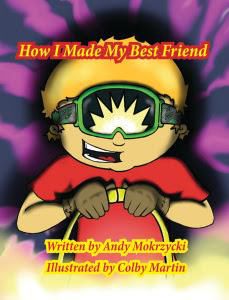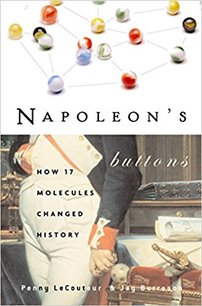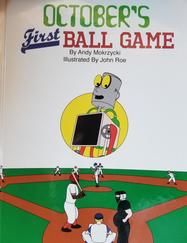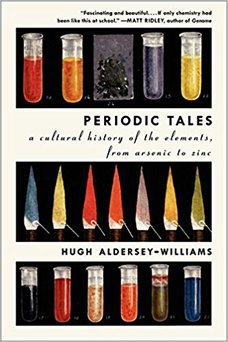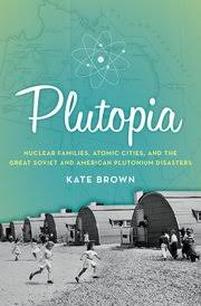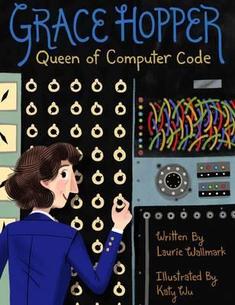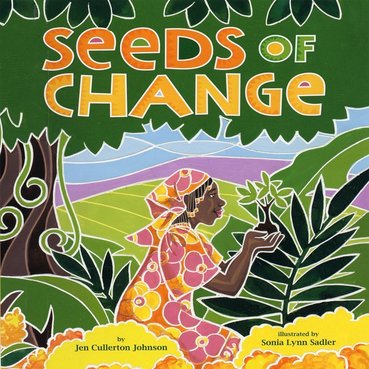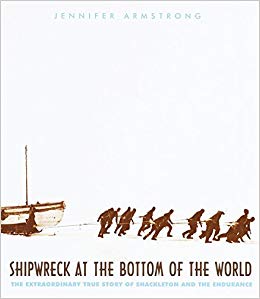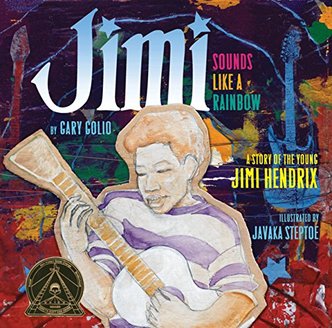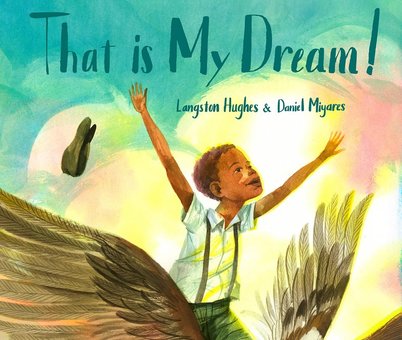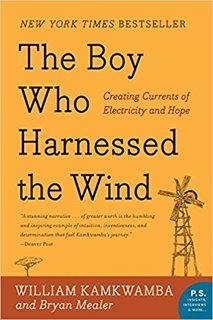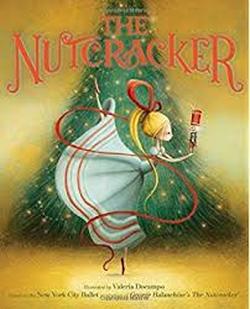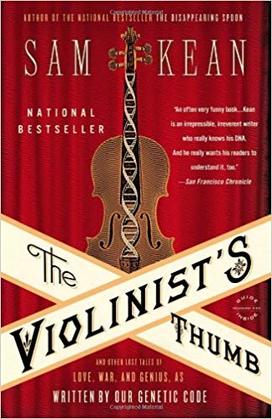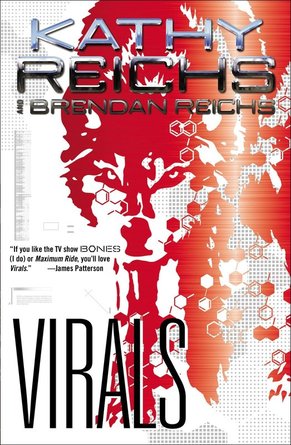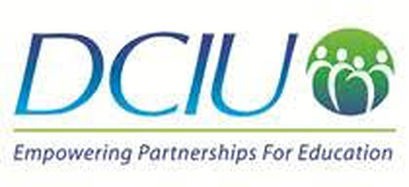What is EGIL?
|
|
|
|
After Professional development on early grades instructional leadership, materials were developed to improve math and reading standardized test scores through lessons that integrate those subjects with science, art, music, and social studies.
|
Goals of EGIL
|
|
|
(1) Develop a results-oriented, replicable program focused on principal impact on schools
(2) Combine coursework with supervised practicum experiences (3) Provide intensive coaching and/or mentoring for participants during their site-based practicum learning experiences (residencies) (4) Integrate academic and practical learning (5) Provide post-licensure support to accelerate early career development (6) Assess learning growth through multiple measures. |
Suggested reading list to support integrated literacy
|
A History of Pi
The book covers two ideas which hold great potential for integrating math in the social studies classroom. Through the ideas of pi and fascism, the book explores the number pi and the history of the struggles people had with its qualities. In studying the number pi, the author discusses how it is like a mirror of the history of man because of the way the number made progress and the way it was hindered due to the influence of militarism and/or religious fanaticism. |
|
A Long Walk to Water - Grades 4-12
This book follows two story lines which can support engaging literacy activities in social studies classes. One begins in 1985 following an 11 year old boy, named Salva Dut, who lives in a South Sudanese village during the Sudanese civil war. Separated from his family, Salva becomes the leader of the refugee group and leads them to Kenya. He is then adopted by an American family. Upon finding out that his father is in the hospital he travels back to Sudan. He returns to America vowing to help the suffering people of Sudan and decides to build wells in impoverished villages. The second story line begins in 2008 with a young girl named Nya, who is from a village in south Sudan, who spends her days fetching water which requires taking several trips from her village to a large dirty pond that is several miles away. Then one day, some men arrive at her village to speak with the chief and over the course of several months, they begin to clear the land to build a well to provide clean water for the village. The books ends with Nya introducing herself to Salva, the man responsible for designing the well. |
|
A Loud Winter's Nap - Pre K-2
This charming children’s book features a Tortoise and how normally he sleeps through the entire winter and thinks nothing of it, but his friends think otherwise. The tortoise tries to get ready for hibernation, but his friends continue to disrupt him by creating noise through several activities nearby each spot he tries to inhabit. Despite the annoyance of trying to hibernate, the tortoise soon realizes the beauty and his love of the winter. Reading this book to your class will provide your student with a silly way to learn about hibernation, which animals hibernate and which do not. |
|
The Bravest Dog Ever: The True Story of Balto - Grades Pre K-5
In this courageous story, Natalie Standiford writes about the true story of the brave dog Balto. Starting out as a smart, strong lead for Gunner’s dog sled team, Balto runs through the wild Alaskan winter weather to be a hero: It's 1925 in Nome, Alaska, and a doctor needs medication from 800 miles away to cure two kids who are fatally ill. It is up to Balto and his team to get to Nome to get the medicine. This story shows how the actions from one person can help everyone. |
|
Black Star, Bright Dawn - Grades 4-8
Black Star, Bright Dawn is about an Eskimo girl named Bright Dawn who owns a husky named Black Star. They are taking the place of Bright Dawn’s father in a dogsled race. As the book progresses, the dogsled race continues but the race become less important because of the bad conditions of the race. The book quickly focuses on her struggle against the wilderness and the idea of self-reliance. The variety of locations discussed in the book allow lessons on geography to be integrated into the book discussions in a social studies class. The struggles she experiences can be explored through a social lens highlighting her struggles that many groups of people had to solve before our modern technology. This could give way to a fruitful discussion on cultures and how they are shaped by the surrounding natural environments. |
|
Blockhead - Grades 4-8
Leonardo Fibonacci grew up in Medieval Italy. He was always fascinated by numbers and daydreaming. Later in life, he traveled the world and was struck by the numbers used around the world. He realized that many objects in the world around us, such as the number of pines on a pinecone to the shape of a nautilus shell, seemed to follow a specific pattern. Recognizing this pattern, Leonardo discovered the Fibonacci Sequence. Integrating this book into a math class can shed light on how science and math are deeply connected. |
|
Blood on the River - Grades 4-12
Twelve year old Samuel Collier joins Captain John Smith aboard the Susan Constant to go to the New World. On the journey, Samuel experiences unfriendly ships and finds ways to avoid further conflict. Developing a sense of right and wrong in this new context, his first contact with indigenous people leads him to discover that the New World is nothing like he had thought it would be. As he survives the harsh, new colony, Samuel evaluates the life lessons, learning to make choices with his heart rather than turn to fighting. This book can help students better understand the sides of history and cultural comparisons discussed in social studies classes. |
|
BOMB - Grades 4-12
Steve Sheinkin writes the story of a chemist who makes the shocking discovery of the atomic bomb; a game changer during a time where war and the pursuit of military dominance is prominent. The chemist in a German laboratory discovered when radioactive material was placed near uranium, the atom would split in two. This began the race which spanned three continents and ultimately lead to the most formidable weapon during war. The story of the atomic bomb involves some of the most genius scientists, expert spies and the most hardened military commanders who fought for military dominance for their country. Sheinkin writes a risk-taking story about deceit and plotting to win in the atomic race. |
|
Brilliant Blunders - Teachers
Mario Livio shows how even five of history's most brilliant geniuses made major mistakes and how their errors were a crucial part of the process to achieve their scientific breakthroughs. The mistakes that these great scientists made helped advance science and an understanding of the reality of scientific discovery can make science more accessible and integrate literacy in science. Mario Livio explains that science thrives on error and it advances when erroneous ideas are disproven. |
|
Call of the Klondike - Grades 4-12
Stanley Pearce and Marshall Bond were captivated by the gold rush and the possible treasures to be found. While unconventional, the story is told through personal letters between Pearce and Bond, pictures, and secondary news sources from when both men arrived in Seattle in 1897. Around this time, a ship returned to Seattle from the region of Klondike full of miners whose pockets were filled with gold; This caught their attention. Believing it was destiny, the two gathered funds to finance their expedition. The trail was difficult and despite putting up with extreme conditions, they were never able to reach Klondike. While they returned empty handed, their minds were filled with stories of sleeping under the Northern Lights, making friends, and being part of the gold rush. This book is an excellent way to incorporate literacy into a social studies classes, especially because of the way the story was told. |
|
Chasing Vermeer - Grades 1-8
Two teenagers have to uncover a mystery larger than themselves; When an invaluable painting by the famous painter Johannes Vermeer is stolen, a distress signal that calls to recover the missing paintings only leads to confusion and skepticism. Now, it is up to Alexander Calder and Tommy Segovia, two self-proclaimed geniuses, to solve the mystery of the missing painting. Despite skipping a whole grade, this might be their most ambitious challenge yet- In fact, it might be ambitious to the point of impossible! This book can provide an interesting integrated literacy component to an art or social studies class. |
|
Courage Has No Color - Grades 4-12
Tanya Lee Stone tells the story of some of the unsung heroes of World War II—the Triple Nickles. The Triple Nickles were a group of the first all-black paratroopers in America. Black men were often relegated to low-level service duties while white men saw endless opportunity. In spite of the opposition, Sergeant Walter Morris knew the capabilities of his men and led them into a battle. This powerful story can integrate literacy in the social studies or history classroom, engaging a variety of readers in experiencing what would otherwise have been lost to history. |
|
Engineer This! - Teachers
Engineer This! by Carol McBride provides a host of great projects for young engineers that can be implemented in any science class. With ten unique projects, children gain STEM literacy as they think, build, process, hypothesize, test, and revise. The lessons are geared towards elementary students and provide descriptive instructions. From basic catapults and parachutes, to the construction of bat wings that actually move, this book is a fantastic introduction an engineering and physics focused way of thinking. |
|
Fever 1793 - Grades 4-12
Laurie Halse writes Fever 1793, as a coming-of-age story addressing death, hardship, perseverance, and respect ideal for including literacy in a social studies class. The engaging story is about Mattie, a fourteen-year-old girl living above the family coffee shop in Philadelphia before an epidemic hits the area and her mother falls ill. Mattie leaves the city for the country, but falls ill on the trip. After getting care from a hospital outside the city, Mattie and her grandfather recover only to return to a ransacked home. After their return, Mattie's grandfather is killed in a fight with a robber, and Eliza, a free black woman, takes Mattie to her brother's house for safety. When the fever starts diminishing, Mattie and her brother return to the city, reunite with their mother and begin to rebuild their life. The time and place also supports literacy integration in a history class. |
|
Fibonacci Fun - Teachers
This is a book full of easily reproducible activities that include patterns, sequences, and other problem-solving activities. It gives readers context for mathematical theories and puts them in a fun setting. There are many different discrete math topics that will immerse students so that they are better able to deeply understand these concepts. The book also uses art to illustrate different ideas in the book which can be very useful for visual learners to be able understand and visualize the material better. Overall it is a fun educational tool to bring art into math class or math into art class. |
|
Hatchet - Grades 4-12
Young Brian Robeson is going to visit his recently divorced father via a small airplane. He brings a small hatchet which was a gift from his mother before he left. As he is flying in the plane and the pilot falls ill and Brian now must try to save the plane. He frantically steers it to a body of water to try to survive when the plane crashes. The pilot is dead and Brian is alone now in this isolated land and has to fend for himself and try to get back to civilization. His story of survival can provide talking points for how people survived in nature before society to support a history or social studies class or the problem solving he experiences can highlight the scientific process to support integrating literacy in science. |
|
Hidden Figures - Grades 4-8
Hidden Figures, gives the story of three African American women who were very involved and had important positions at NASA. However, despite their amazing intelligence and dependency on these women, it was during the 1940’s where things were changing for African Americans but racism and sexism was still strongly expressed. In spite of the challenges that these three intelligent women faced, they thrived and managed to do things that no one else around them could do. For years, their hard work and contributions were overlooked and thought to be forgotten but this novel sheds light on the truth of how these three African American women contributed tremendously to the most memorable works of NASA. Their boldness and influence challenged and tore down racial barriers and opened the door for other African American women to be strong and courageous against the opposition and achieve what seems to be unachievable. |
|
Hog Wild
This is a colorful illustrated song and dance book that has an accompanying CD set. It features many different popular music artist. What is special about this book is that there are many different types of music collaborations with unique pairings of artists. The illustrations in the book are beautiful visuals to include with the music. Within the books are also lyrics for each song along with the pictures which makes it ideal for integrating literacy in any music class. |
|
How I Made My Best Friend
This story follows a young boy who in his loneliness finds a creative solution to his problem. He felt so lonely in the spring and into the summer that he decided to venture on a new route to find a friend. He works all summer and finally completes his creation. He shares his robot with the class for show and tell and his peers love it. This unique experience brings him closer to his classmates. |
|
How We Got To Now - Grades 7-12
Steven Johnson explores and connects various innovations throughout time and connects them to modern apparatuses. Each chapter explores a different innovation that changed the way people experienced every day life. However, Johnson structures these findings in a way that is conducive to young student learning environments. The book consistently raises the idea that some kind of unconventional idea or experiment can be accomplished in even the most unlikely environments or situations. This book is very engaging and can support literacy in the science classroom. It even relates social studies to science in the way they explore the progression of society as influenced by scientific inventions. |
|
Magic Tree House: Perfect Time for Pandas - Grades 1-5
Jack and Annie are time-traveling twins who go on amazing, world-wide adventures with each other. In this adventure, Jack and Annie travel to a village in southeast China looking for a certain type of food. The village they are sent to is close to a world-famous panda reserve. Little do they know, they were sent to this village on the day of an earthquake! This will not be a difficult adventure for this brother-and-sister duo, but they are brave, bold, and ready to succeed whatever it takes. Fact Tracker Jack and Annie have been whisked away to China for this latest adventure. After their adventure, they returned to the Magic Tree House with many questions about pandas. Questions including: Where do pandas live? What do pandas eat? How can we help? The fact tracker has up-to-date information on pandas with fun illustrations and photos as well as small excerpts from Jack and Annie. The fact tracker is a great way to feed kids’ curiosity on the topic they were just reading about. It is great to buy in tandem with the actual story to have the balance of fictional and non-fictional information. |
|
Mathematics, Poetry, and Beauty - Teachers
The idea of mathematics and poetry being involved with one another seems absolutely absurd. Both of these ideas are normally different in approach, but Aharoni makes comparisons of the similarities between the two subjects in an engaging way that brings literacy into the math classroom. The main idea of the book is to try to discover how mathematical arguments and a poem can “move” someone in the same way. Both these concepts are further compared to represent how they can equally evoke the same amount of beauty. |
|
Moonbird - Grades 4-12
Moonbird tells the story of an extraordinary bird named Moonbird. “Moonbird” is the nickname given a rufa with the tag number B95 on its left leg. This robin-sized red knot has flown over 325,000 miles, estimating to be the distance of traveling to the moon and halfway back! The book follows this bird from southern Argentina to the Arctic over the course of a year. Scientists have been documenting the bird since 1995 and are astonished every year when it sets on its journey to the Arctic. On its migration path, beautiful photographs illustrate its flight pattern, diet and strategic stops for rest. |
|
Napoleon's Buttons
The authors of this book provide context of historical events of the chemical continuum. The stories that are detailed in this book surround 17 fascinating chemical compounds. The chemicals discussed in this book can be found in spices, dyes, explosives and other substances. There is even a drug that can account for witches flying on broomsticks. The purpose of these stories is to inform the general public and explain how it affects civilization. This easy read can fit very well into a chemistry class to support the integration of literacy in core science classes. |
|
October's First Ball Game
A man and his son built a robot named October. They named it October because that’s the month of the world series. They bring the robot to his first baseball game. Through the duration of the game the robot asks a multitude of information baseball questions. This book educates people on the different processes of baseball. |
|
Periodic Tales
Periodic Tales is an engaging read to implement in a chemistry class. Written in 2011 by English writer Hugh Andersey-Williams, this book is a popular science and history book. It provides readers with a captivating look at the elements, and the stories behind their discoveries. The reader follows the author's quest to obtain samples by reproducing the original method of discovery and by also visiting the site of discovery of several elements uncovered in modern times. Divided into five sections, "Power", "Fire", "Craft", "Beauty", and "Earth", the author groups different elements according to their primary cultural connections, instead of their position on the periodic table. This book can support the integration of science and social studies through literacy. |
|
Plutopia
Plutopia is a book written by Kate Brown that narrates plutonium disasters that have occurred in the United States and the Soviet Union. This is an excellent book to integrate into social studies or science classes to support literacy goals. The book discusses both countries in the midst of the nuclear arms race, and their similiar and different tactics. Brown went on to tackle the multitude of effects from the hazardous practices from both cities on the surrounding environment. Countless lives were affected and authorities, especially in Soviet Union, were not held accountable. Plutopia gives a profound storyline about one of the many horrible byproducts of the bad decisions made during the Cold War. |
|
Queen of Computer Code - Grades Pre K-2
Telling the interesting story of the brilliant scientist Grace Hopper, this book illustrates her wonderful personality and her greatest achievements in science. She is a role model for many people interested in science because she greatly contributed to the development of the modern computer after overcoming great odds. Perfect for a history or social studies class read, this book can also be read in science classes to support integrated literacy. |
|
Seeds of Change - Grades 1-8
Wangari, a young girl from the Kikuyu tribe, was raised to love the world around her. Her elders instilled in her a respect for nature which led to loving the land she walked on, and all the plants and animals around her. While most Kenyan women were not allowed be educated, Wangari was granted permission to attend school. She did so well that she was encouraged by her community to continue her studies in the United States. After learning a great deal, Wangari recognized the importance of allowing women to learn. She used her knowledge and compassion to promote rights and save her land. This story can be used to explore cultures and values around the world in a social studies class to integrate literacy into coursework. |
|
Shipwreck at the Bottom of the World - Grades 1-8
Ernest Shackleton and twenty-seven men sailed from England hoping to be the first crew to completely cross the Antarctic continent in August 1912. For nine months of hardship into the journey, the ship (Endurance) is trapped in a frozen sea and eventually crashes and sinks. This forces Ernest Shackleton and several men to use a perilous boat to travel through 800 more miles into the stormy and icy sea to reach and find help. Jennifer Armstrong vividly describes and details the journey of how Shackleton’s leadership leads the crew through the vigorous journey at sea. |
|
Sounds Like a Rainbow - Grades 1-5
To bring literacy, music, and art into the science classroom Sounds like a Rainbow is an engaging read. Written by author and child psychologist, Gary Golio, the story follows a young musician by the name of Jimi Hendrix. Golio wrote this biography from the perspective of an admiring fan, highlighting Hendrix's rich imagination that refused to be constrained by humble beginnings. Starting in Jimi's early teens and ending at the peak of his success, this story shows how determination, practice and imagination can help a child transcend their surroundings. The author's hope for this story is to help troubled children and children who simply don't know what they want to do later in life develop a sense of direction. |
|
To Explain the World - Teachers
Looking to the past, Nobel prize winner Steven Weinberg discusses the great physics discoveries throughout time. He takes a critical look at ancients practice of science, considering them poets rather than scientists. He also explores the historical conflicts around scientific discoveries and the influence of these discoveries on math, technology, religion, philosophy and poetry. This book is an excellent way to supplement a science class with social studies or integrate science in the social studies class. |
|
That is My Dream - Grades Pre K-2
Based on Langston Hughes’ popular poem “Dream Variance”. The book is illustrated by Daniel Miyares and illustrates the pride and joy Hughes spoke of in his poem. In the book, an African-American who faces the harsh reality of racism and segregation, comes to terms with this reality and speaks of having a dream where these realities do not exist. All he wants is to fling his hands out wide in the face of the sun and live with freedom and crazy possibilities. His experience can be a powerful read in the context of a social studies and an engaging way to support literacy in the classroom. |
|
The Alchemist - Grades 7-12
Paulo Coelho writes a story about an Andalusian shepherd boy named Santiago who travels from his homeland to search for a treasure buried under the Egyptian pyramids. While on his quest he meets three people, a gypsy woman, a man who refers to himself as a king and an alchemist. They all show him the right direction to the treasure; a treasure which no one knows the value. The story starts out with looking for a materialistic treasure, but instead start looking for a treasure from within. This story is inspiring, powerfully simple and exemplifies great wisdom making it a wonderful page turner. This story focuses on the importance of following your heart and transforming your dreams to reality. |
|
The Boy Who Harnessed the Wind - Grades 7-12
The main character, William Kamkwamba, was born in Malawi, a place that was ruled by magic. He had dreams of bringing luxuries of the modern world like running water and electricity to his village. Through knowledge and creativity, he was able to build a small contraption to reach his goal. This book illustrates human inventiveness in the face of adversity. It also demonstrates an individual’s capability to change his community and better the lives of those around him through hard work and dedication. This book is truly an excellent way to bring literacy and some science concepts into a social studies class. |
|
The Martian - Grades 7-12
In the book, Mark Watney, one of the first people to walk on Mars, faces dire circumstances. During his mission to the red planet, a sandstorm separates him from his crew who have no choice but to leave him stranded on Mars. Despite a hole in his space suit, he manages to stay alive and keep a good sense of humor. Beginning to assess the situation in order to create a plan of survival, he calculates the amount of food and air left in his suit. This book follows his hopeful fight to survive long enough for NASA to rescue him. This book fits very well into a science class to increase interest and integrate literacy into the classroom. |
|
The Nutcracker - Grades 1-5
This fairytale holiday classic is told based on George Balanchine’s quintessential production and can be read in social studies to support literacy in the classroom. The story follows a young girl, Marie, who was dancing with her nutcracker toy and broke it. After her uncle fixes it, overnight, everything grows exponentially and eventually her nutcracker is her size and they start on a little journey. Marie and her nutcracker toy travel through the land of sweets and meet other characters like the Sugarplum Fairy and Mother Ginger. In the end she is whisked away to a magical kingdom when the nutcracker turns into a prince and the two enjoy their time together and continue on more adventures. |
|
The Violinist's Thumb - Grades 7-12
In The Violinist’s Thumb, Sam Kean discusses the essential building block of life: DNA. He explains how genes pre-determine who and what someone will be regarding their looks, talents, why they like the things they like, and, for example, how one can be pre-disposed to being an artistic genius which makes it a very relevant read in a science class. He discusses natural selection and why life evolved so slowly as well as what our most important and ancient DNA is and how those traits are passed down to our children. He breaks down the relationship between humans and apes, when humans broke away from apes, and what makes us mammals. Kean questions life as we know it, explains human history in a captivating way, and answers the thought-provoking questions of how DNA has affected our past and how it will affect our future. |
|
The Wild Robot - Grades 4-8
The book The Wild Robot, about no ordinary robot, is a fun way to integrate literacy into an elementary school science class. This robot named Roz, has a personality, emotions, and a mind of her own. While packed in a box being shipped to a intended destination, she along with other robots were lost cargo that fell into the sea and ended up washing up on the shores of a wild island. Roz learns to adapt to nature and learns how to survive in an environment she originally was not designed for. However, Roz accomplishes many great things that one may not imagine a robot could do. After some time of living her life in the wild which has become so natural to her, she is faced with her unknown past. |
|
Virals - Grades 7-12
Virals follows a group of teenagers who end up on an research island named Loggerhead Island. The gang will eventually get twisted into solving a murder that happened on the island. A student who tried creating a project on endangered species travelled to an island named Cole Island where she was murdered by the owners and dragged onto Loggerhead Island. The teens had rescued a young puppy on the island before so they were familiar of their surroundings. One day, they go looking for the puppy and they are caught by a researcher who warned them not to go into the restricted areas. The crew then finds a rusty dog tag and break into the researcher’s lab in order to find the owner of the dog tag. Once in the lab, they find the dog they’ve been looking for but it’s sick. While nursing the dog back to health, they contract the dog’s sickness which gave them wolf-like powers. The teens also figure out the dog tag belongs to the dead student and they set out solve the murder. Eventually, they found the murderer, found the body and decided to keep their new powers to themselves. |
|
Zero
In Zero, Charles Seife comprehensively discusses the Babylonian history of the number zero, its polarizing existence and how it is everything and nothing simultaneously. The number traveled from the eastern section of the world to the western in brilliant fashion, tearing apart conventional forms of thoughts one region at a time. The number zero has been attempted to be understood by astrophysicists of today, but it challenges the foundation of modern physics as well. Zero discusses the role the number zero has in black holes and the Big Bang itself and the book speaks on the duality between zero and infinity. Zero may be the type of book that will leave you with more questions than answers, but it is a wonderful read for any science or math classroom, containing insights that will have you thinking about this number, its origin, and how it became a topic that the masses may never fully understand. |
Research Support
|
|
|
Bibliography of research on instructional leadership and integrated curriculum.
|
Integrated Curriculum
Chiu, A., Price, C. A., & Ovrahim, E. (2015, April). Supporting elementary and middle school STEM education at the whole school level: A review of the literature. In NARST 2015 Annual Conference.
DePaul Science Working Group. (2013). Implementing The Next Generation Science Standards: Hallmarks of a Fully Realized School System. Chicago STEM Education Consortium, Chicago, IL.
Kermani, H., & Aldemir, J. (2015). Preparing children for success: integrating science, math, and technology in early childhood classroom. Early Child Development and Care, 185(9), 1504-1527.
National Research Council. (2011). Successful K-12 STEM Education: Identifying Effective Approaches in Science, Technology, Engineering, and Mathematics. Washington, DC: The National Academies Press.
Instructional Leadership
Boston, M. D., Henrick, E. C., Gibbons, L. K., Berebitsky, D., & Colby, G. T. (2017). Investigating how to support principals as instructional leaders in mathematics. Journal of Research on Leadership Education, 12(3), 183-214.
Bush, T., & Glover, D. (2014). School leadership models: What do we know?. School Leadership & Management, 34(5), 553-571.
Clarke, S. (2016). Moving from best practice to next practice: some deliberations on educational leadership. School Leadership & Management, 36(3), 353-363.
Crow, G. M., & Whiteman, R. S. (2016). Effective preparation program features: A literature review. Journal of Research on Leadership Education, 11(1), 120-148.
Jean-Marie, G., Normore, A. H., & Brooks, J. S. (2009). Leadership for social justice: Preparing 21st century school leaders for a new social order. Journal of Research on Leadership Education, 4(1), 1-31.
Khalifa, M. A., Gooden, M. A., & Davis, J. E. (2016). Culturally responsive school leadership: A synthesis of the literature. Review of Educational Research, 86(4), 1272-1311.
Shaked, H., & Schechter, C. (2016). Holistic school leadership: Systems thinking as an instructional leadership enabler. NASSP Bulletin, 100(4), 177-202.
Chiu, A., Price, C. A., & Ovrahim, E. (2015, April). Supporting elementary and middle school STEM education at the whole school level: A review of the literature. In NARST 2015 Annual Conference.
DePaul Science Working Group. (2013). Implementing The Next Generation Science Standards: Hallmarks of a Fully Realized School System. Chicago STEM Education Consortium, Chicago, IL.
Kermani, H., & Aldemir, J. (2015). Preparing children for success: integrating science, math, and technology in early childhood classroom. Early Child Development and Care, 185(9), 1504-1527.
National Research Council. (2011). Successful K-12 STEM Education: Identifying Effective Approaches in Science, Technology, Engineering, and Mathematics. Washington, DC: The National Academies Press.
Instructional Leadership
Boston, M. D., Henrick, E. C., Gibbons, L. K., Berebitsky, D., & Colby, G. T. (2017). Investigating how to support principals as instructional leaders in mathematics. Journal of Research on Leadership Education, 12(3), 183-214.
Bush, T., & Glover, D. (2014). School leadership models: What do we know?. School Leadership & Management, 34(5), 553-571.
Clarke, S. (2016). Moving from best practice to next practice: some deliberations on educational leadership. School Leadership & Management, 36(3), 353-363.
Crow, G. M., & Whiteman, R. S. (2016). Effective preparation program features: A literature review. Journal of Research on Leadership Education, 11(1), 120-148.
Jean-Marie, G., Normore, A. H., & Brooks, J. S. (2009). Leadership for social justice: Preparing 21st century school leaders for a new social order. Journal of Research on Leadership Education, 4(1), 1-31.
Khalifa, M. A., Gooden, M. A., & Davis, J. E. (2016). Culturally responsive school leadership: A synthesis of the literature. Review of Educational Research, 86(4), 1272-1311.
Shaked, H., & Schechter, C. (2016). Holistic school leadership: Systems thinking as an instructional leadership enabler. NASSP Bulletin, 100(4), 177-202.
